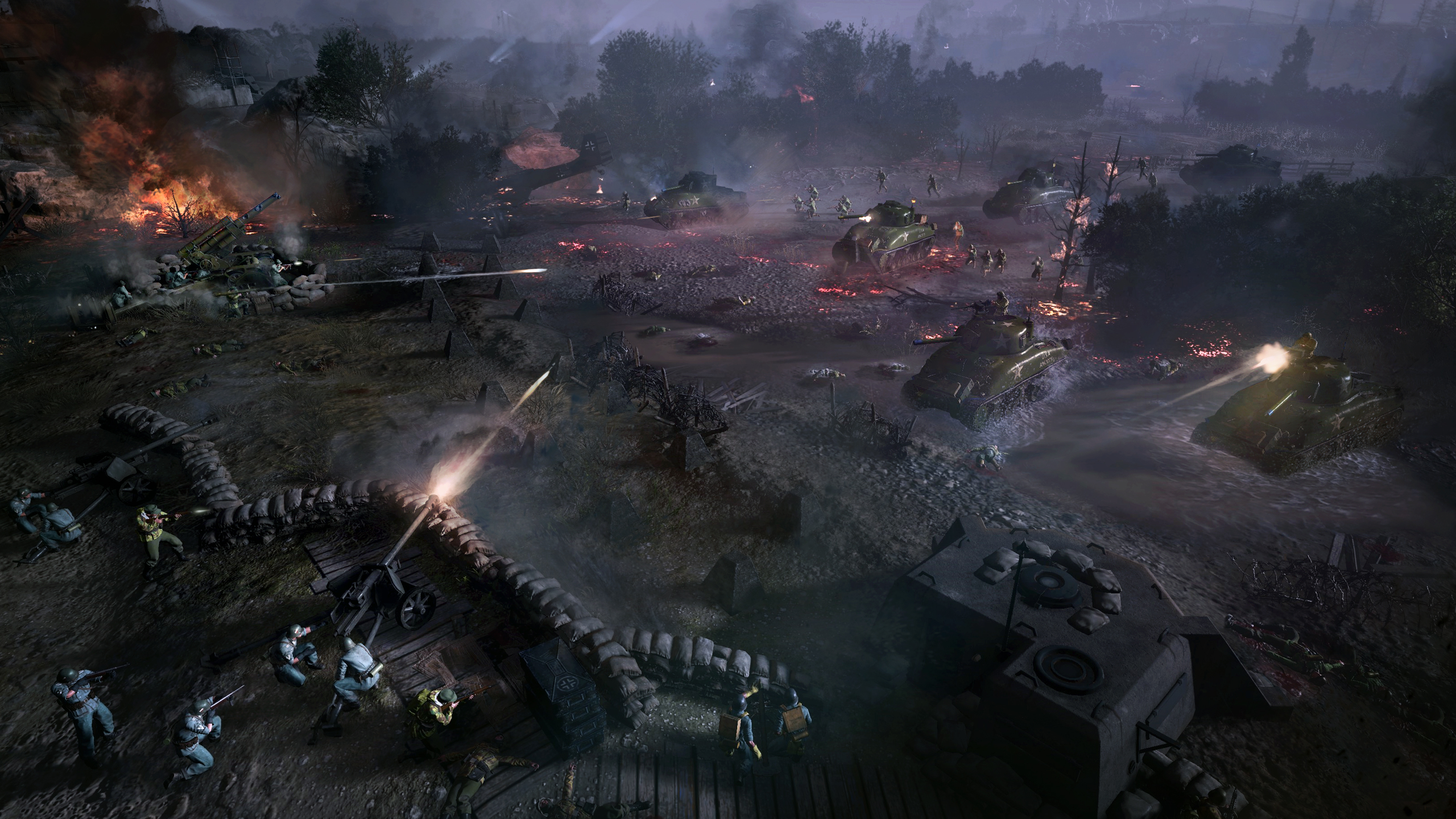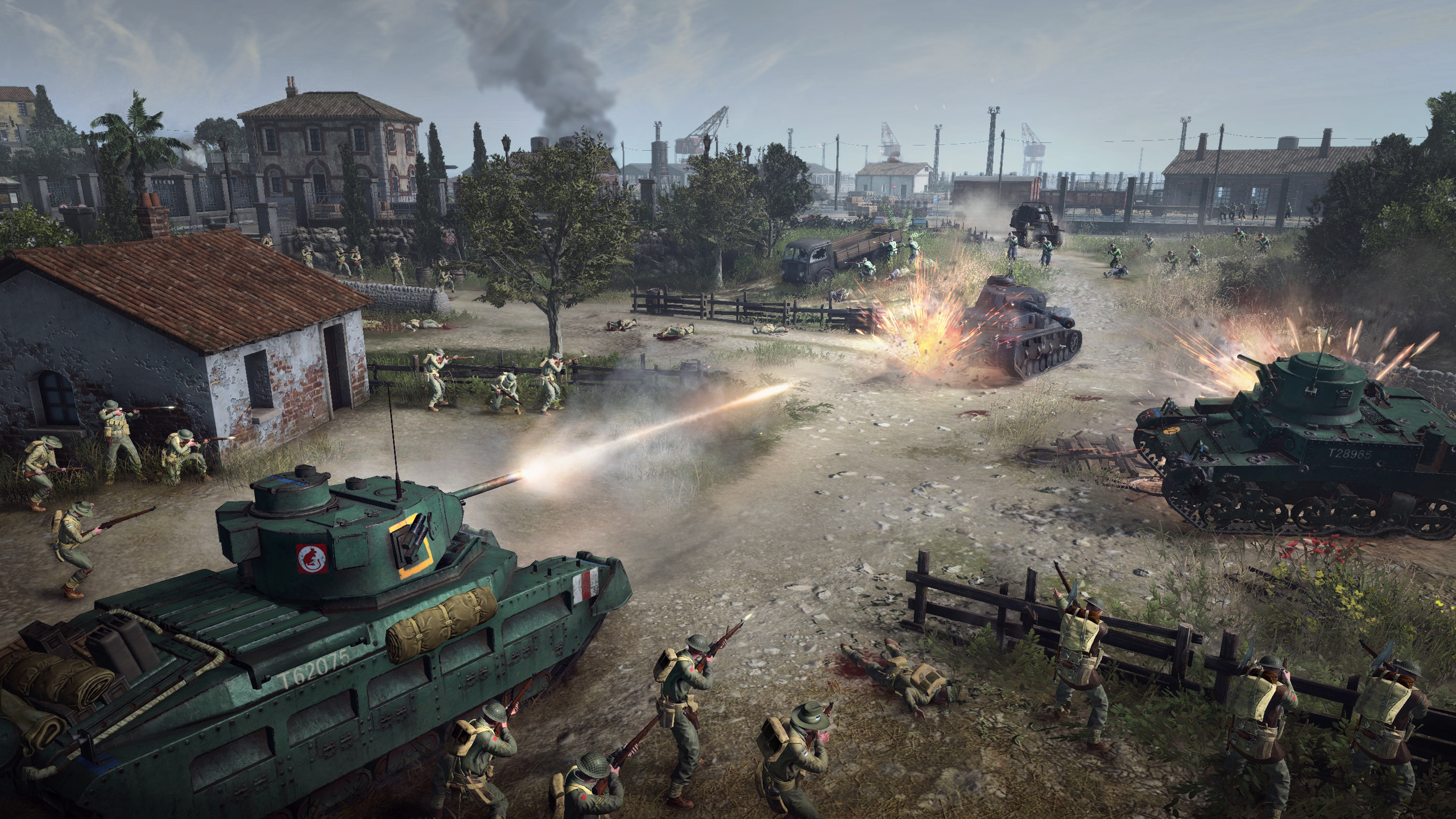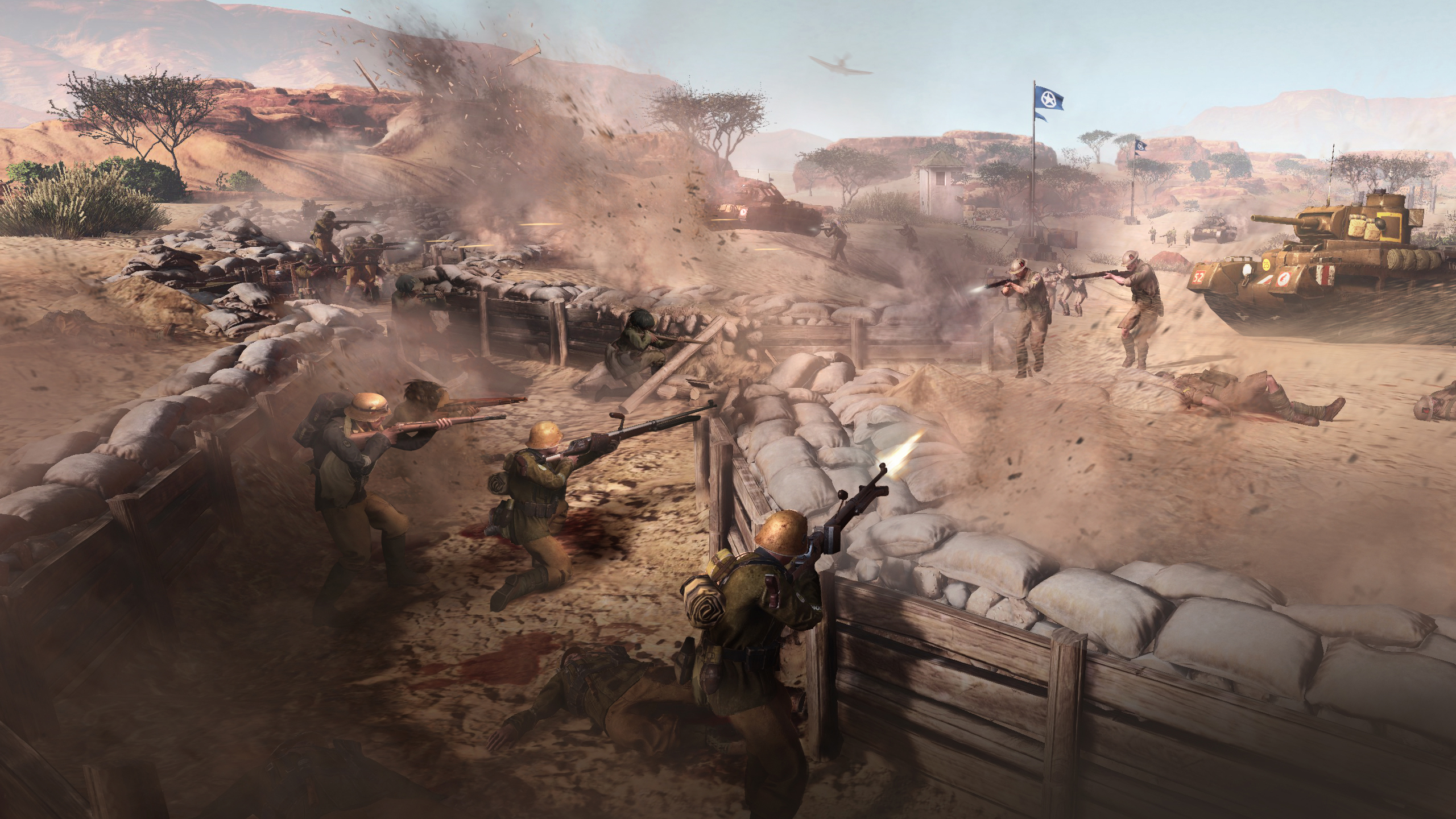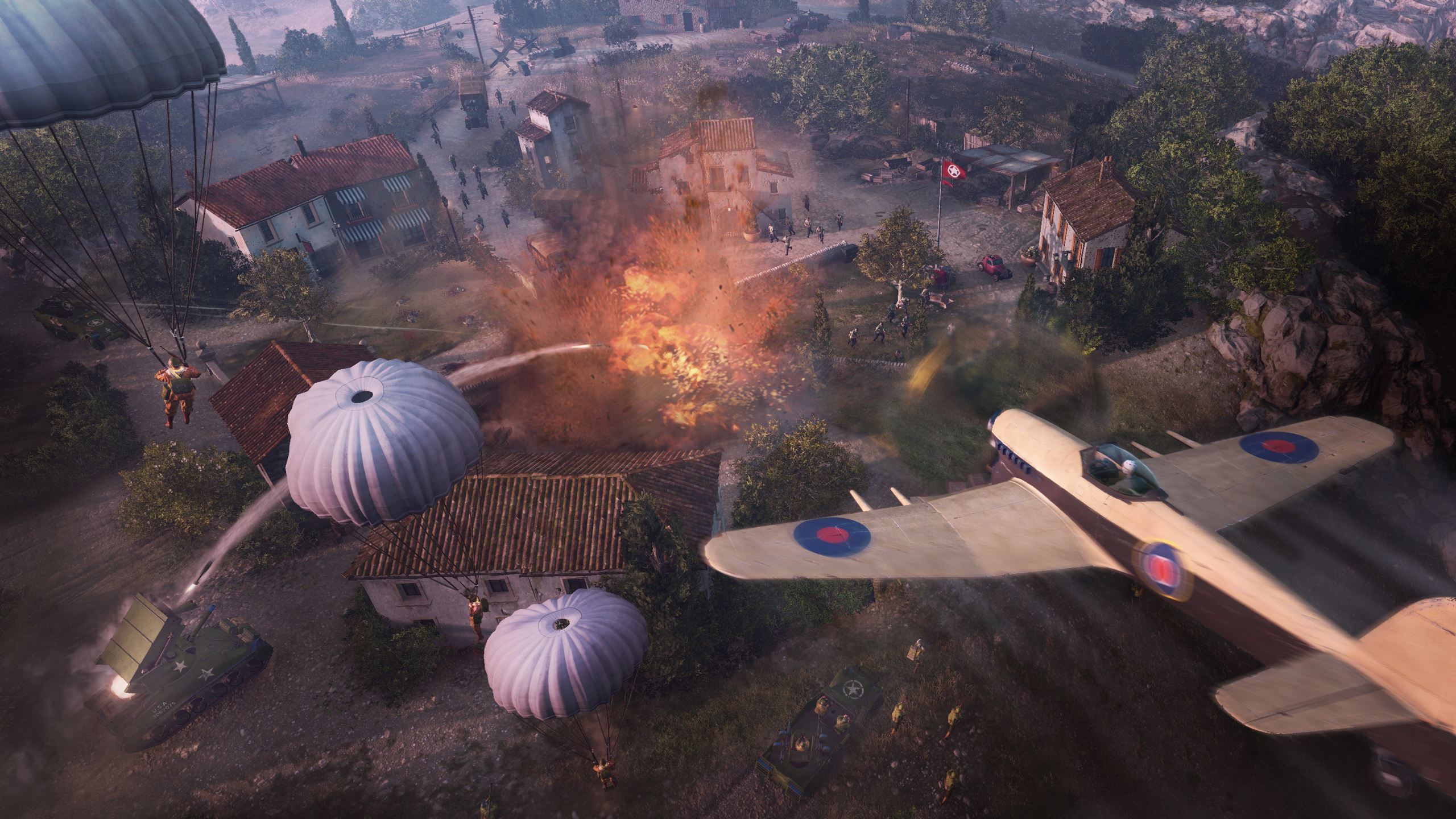‘Company of Heroes 3’ Achieves a Victory, but Not a Decisive One
February 20, 2023Everything you expect from the series is here, familiar, and still-great in Company of Heroes 3: this is a raucous and cinematic World War 2 real-time strategy game whose battles still set a standard for drama. The action shifts from the Eastern Front to the Mediterranean theater for this installment, trading the divisive winter mechanics of the sequel for the North African desert and the twisting, claustrophobic streets and steep hills of Italy. The new setting does terrific things for an RTS series that arguably perfected itself with the first entry, creating fresh and exciting tactical possibilities and memorable moments while feeling like a welcome return to basics.
Company of Heroes 3 also arrives with a dynamic single-player campaign built on the lines of a Total War game, one that promises the kind of variety and replayability that is often lacking in traditional RTS campaigns. Unfortunately, this signature feature is shot through with small bugs and glitches, and its entire concept is undermined by a passive AI adversary. It ends up functioning more as a meandering mission tree where you alternate between repetitive skirmish games that serve as filler and scripted story missions at key objectives that rank among the best in the series history.
The campaign opens with the allied landings at Salerno and covers the great, bloody slog up the Italian peninsula that followed. This is an unloved campaign in the popular imagination. The war in Italy was one of stalemates punctuated by nightmarish debacles when the Allies attempted to break them. After landing, you frequently face competing objectives from your two campaign advisors: the diffident British commander, Norton, and the blustering Patton-esque American commander, Buckram. Later, the Italian resistance will have side missions for you, and as you fulfill these objectives you’ll unlock theater-wide bonuses for your forces.

At least to start, it’s hard to meet all these objectives because you only have a handful of companies to push around Italy, and they can only attack once per turn. As you capture ports, your “population cap” goes up and you can field more companies, or create useful support units like aircraft or artillery emplacements that can help blaze a trail for your companies. As they gain experience they can be customized with a variety of abilities, units, and bonuses that they will carry with them into the RTS battles.
There is an awful lot happening on this map, but disappointingly little of it makes much of an impact. The Germans mostly sit in their towns and wait for your forces to arrive and trigger a battle for control. Some of these are just AI skirmish battles, but the more important locations tend to have an authored mission associated with them. For instance, when you attack the monastery and Monte Cassino, you play an incredible mission that begins with a street fight in the town below, then a long ascent up a series of switchback mountain roads held by German strongpoints, and finally culminating in an assault on the fortress-like monastery itself.
The strategic map has some elements that are supposed to influence the shape of these engagements. Both sides can build strategic defenses that will chip away at the strength of units that wander into their range. So if an infantry company stumbles across a machine gun nest, it might lose a third of its strength just walking toward it Likewise, fighting a battle near a friendly airbase means that bomber and fighter support will be available, regardless of whether or not your chosen company would normally have access to those abilities.

But the Germans almost never push back on the campaign map. For a while I was not sure they ever would: I just started fanning my companies out across the countryside taking towns that offered more supplies and resources that could be spent on strategic-level construction and abilities. I never once saw German forces attempt to retake territory, and it wasn’t until I was deep into the campaign that I finally started seeing German companies adopt a proactive posture and begin swarming my advancing units.
That proved to be a double-edged sword, because what those field battles tend to entail is a series of skirmish battles whose difficulty is determined by the relative strength of the two companies. So if your forces have been whittled down, it seems like the Germans will receive major economic bonuses that will make it far easier for them to bring on reinforcements to replace lost units. When I had the advantage, I would often start with more of the map under my control and perhaps a larger slate of starting units. Sometimes this balancing made the battles a bit tedious: one skirmish was such a nightmare that it took about 2 hours to play through, because the victory condition was that I had to hold all the territory control points around the German base at once. With constant waves of German reinforcements boiling out of that corner, I had to just build layers of defenses to ensure they could not break through and capture a bunch of ground that I would then have to recapture against those same frustrating odds. However, once my companies had gained enough experience to unlock a good share of their upgrades, these battles became trivially easy across the board.
In a concession to people who find the pacing of RTS games a bit too hectic, and who find that the tactical depth of Company of Heroes can be lost amidst the frantic chaos, Relic has introduced a “tactical pause” where, with the press of the space bar, you can freeze the action and issue a queue of orders to your units. It works very well and feels surprisingly nice to use, especially with the helpful lines it draws to show exactly what everyone is going to be doing when you unpause. However, I also found the AI was so shaky that I didn’t need to use this feature much. It is bad at building up its economy enough to field advanced units, and it is absolutely miserable at playing map objectives. The skirmish mode AI tends to put up a stiffer fight, but in the campaign it often seems lost.

There were also a lot of oddities that cropped up in the campaign. Sometimes maps would just glitch in ways that were hard to notice but were quietly game-breaking. In one game, units I called in from off-map would get stuck behind by headquarters building the edge of the map, meaning that they could never make it into the battle despite being counted against my army population cap. I had to force-fire artillery onto the poor little guys just to clear space. On a few missions, my engineers lost the ability to repair anything, their models just glitching along the surfaces of builds and vehicles as they holstered and unholstered their acetylene torches. Fortunately nothing like that ever occurred on multiplayer maps, but it definitely forced some annoying reloading in the campaign.
Beyond the troubled dynamic campaign, there is a brief tutorial campaign set in North Africa that follows a more traditional RTS template of “narration-briefing-battle-repeat”.
There are some odd decisions here, though not necessarily bad ones. The North African mini campaign serves as an introduction to the DAK (Deutsches Afrikakorps) army, where you take order from Erwin Rommel and spend several missions wiping the floor with British forces on the road to Rommel’s greatest victory at Tobruk and his ultimate defeat at El Alamein. However, the campaign is narrated by a Jewish Libyan who has left his family and thrown his lot in with the British while receiving word of growing persecution back at home in Benghazi.

It is certainly a welcome corrective to the mythology of the North African campaign as being a field of honor that was sealed-off from the Holocaust and Nazi violence, and it attempts to remind players of the people who were caught in the middle of the imperial armies of Italy, Germany, France, and Britain. It’s also walking a line between nodding at the myth of the mighty Afrika Korps and its audacious leader versus responding to a lot of postwar scholarship and has exploded those myths and undercut Rommel’s reputation as a military genius. But it also produces some intense tonal whiplash, as you go from gleefully driving over British trenches with panzers to hearing about the narrator’s Jewish neighbors and family being registered and rounded up by the SS. The dissonance makes it feel like you are not so much getting a story about the Jewish communities of North Africa during the war as you are getting a series of PSA’s intended to make clear that CoH 3 does not endorse what you, the player, just did in your latest epic mission with your cool Afrika Korps special abilities. Still, it’s better we got this than yet another piece of Desert Fox fantasizing, and if the campaign ends up striking an odd note, that’s more to do with the difficulty of pulling context into a type of game where the tanks and elite troopers are necessarily the stars of the show.
Speaking of which, the new setting and the four armies that fight across it do bring a lot of great things out of this game. The learning curve to the full slate of armies here is a bit steep: the lack of a bigger German campaign means you’ll be figuring out the Wehrmacht and the DAK on the fly in skirmish and multiplayer. The two play vastly differently and, like every faction, they can be customized along different lines over the course of a match. That customization has always been a foundation of the series, but it has gone wild in CoH 3 as every army plays differently and then upgrades itself differently. The Americans, for instance, can customize every unit as it gains experience, meaning that after they notch a few kills a pair of identical rifle squads can be given two complementary abilities: “pour it on” boosts their suppression fire, while “sprint” gives a unit a speed boost. Together, you have the basic “fire and maneuver” playbook of infantry warfare. The British forces, meanwhile, have an incredible variety of ways to express the same basic idea of dropping high explosives on anything and everything their path.
All of this interacts beautifully with the great map design you find throughout CoH 3, which is full of dense, gorgeous towns and terraced, hillside cities that turn into hellish little mazes for armored vehicles. At times. It’s probably right on the limit of what is playable: I’ve never had to adjust the camera so much trying to peer behind church towers and apartment blocks to see what is happening in the battle unfolding on the streets below. However, each map usually has a few lanes that are easier to negotiate, providing places to flank and break those defensive strong points, which can lead to interesting battles where one side is dominating the open countryside with tanks and heavy weapons while another has the streets locked-down with infantry and fortifications, forcing each side to try to come to grips with a position they’re not well-equipped and well-resourced enough to contest.

In light of its ambitions, Company of Heroes 3 can’t help but feel like a disappointing version of that game that it feels like it should be (and, with patches, perhaps still could be). The dynamic campaign is a fun novelty with some real highlights, but it’s miles away from achieving what Total War’s campaigns regularly do. Still, this is a new Company of Heroes in a setting that makes its classic elements feel fresh and exciting again. It’s easy to recommend with some caveats, and if it ever comes close to delivering on the promise of that campaign, it will be an all-timer.
